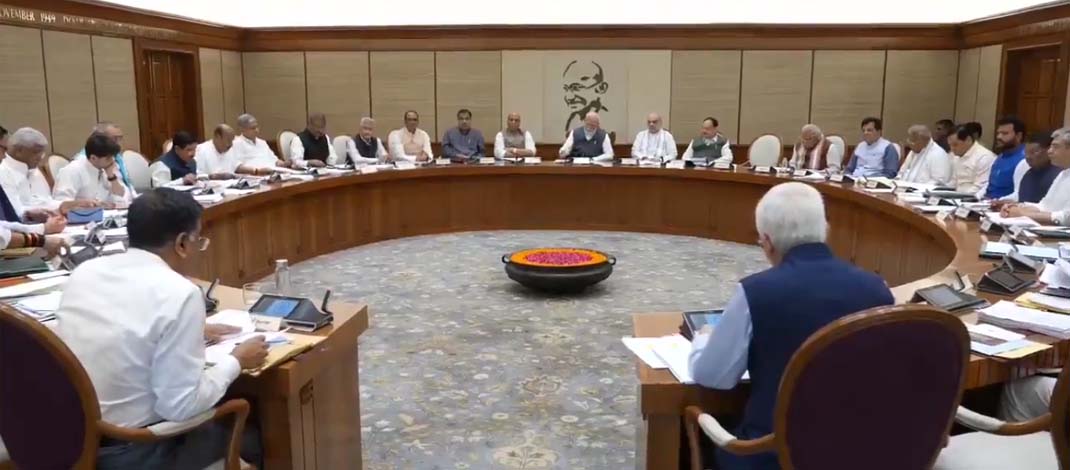- Courses
- GS Full Course 1 Year
- GS Full Course 2 Year
- GS Full Course 3 Year
- GS Full Course Till Selection
- Online Program
- GS Recorded Course
- NCERT (Recorded 500+ Hours)
- Polity Recorded Course
- Geography Recorded Course
- Economy Recorded Course
- AMAC Recorded Course
- Modern India, Post Independence & World History
- Environment Recoded Course
- Governance Recoded Course
- Science & Tech. Recoded Course
- International Relations and Internal Security Recorded Course
- Disaster Management Module Course
- Ethics Recoded Course
- Essay Recoded Course
- Current Affairs Recoded Course
- CSAT
- 5 LAYERED ARJUNA Mentorship
- Public Administration Optional
- ABOUT US
- OUR TOPPERS
- TEST SERIES
- FREE STUDY MATERIAL
- VIDEOS
- CONTACT US
Governments Representation in Collegium System, for appointment of Judges
Governments Representation in Collegium System, for appointment of Judges
Governments Representation in Collegium System, for appointment of Judges
Why in News?
Recently, the Union Law Minister has written to Chief Justice of India D Y Chandrachud to suggest on the matter of appointment of judges.
More about the news
- According to Union Law Minister, government representatives should be a part of the Supreme Court and High Court Collegiums.
- This would be a major leaving from the existing system where the Collegiums have complete absence of executives and have only senior judges.
- The recommendation is new in itself, as instead of proposing a new forum altogether (like NJAC), demand is to change the existing mechanism of judicial appointments and include representatives of the centre.
What is a Current system of appointment of Judges:
Currently, it is the Collegium system, which is used for the appointment and transfer of judges, which has evolved through judgments of the SC, and not by an Act of Parliament or by a provision of the Constitution.
Evolution of the Collegium System:
|
First Judges Case (1981):
|
It declared that the “importance” of the CJI’s (Chief Justice of India) recommendation on judicial appointments and transfers can be refused for “clear reasons.” It gave executive primacy over the Judiciary in judicial appointments for the next 12 years. |
|
Second Judges Case (1993):
|
In this case SC introduced that “consultation” really meant “concurrence”. It added that it was not the CJI’s individual opinion, but an institutional opinion formed in consultation with the two senior-most judges in the SC, forming collegium. |
|
Third Judges Case (1998): |
SC on the President's reference (Article 143) expanded the Collegium to a 5-member body, comprising the CJI and 4 of his senior-most colleagues. |
Criticisms of government being a part of collegium:
- I will undermine the very idea of independence of the judiciary and shall disturb the fine balance as foreseen through the constitution.
- Representation of the ruling government is seen by many as angels as it may attack not only on the independence of the judiciary but also on the competitive balance between the ruling party and the opposition.
About Collegium system
- Judges of the High Courts and the Supreme Court are appointed by the provisions mentioned in Articles 124 and 217 of the Constitution of India.
- Articles 124 and 217 state that the President shall appoint judges to the Supreme Court and high courts after consultation with the Chief Justice of India and other judges.
- The Supreme Court Collegium consists of the CJI and four senior-most judges of the apex court.
- High Court Collegium consists of the Chief Justice of the High Court and two senior-most judges of that particular court.
- Also, recommendations made by the Collegium are binding.
|
Significance of the Collegium system: |
Issues with the current collegium system: |
|
|
About MoP (Memorandum of Procedure):
- The Memorandum of Procedure (MoP) is the official book on the appointment of judges.
- MoP is agreed upon by the government and the judiciary both.
- It is an important document that governs the collegium system of appointing judges.
- Since the collegium system changed and evolved gradually through a series of ruling by the Supreme Court, the MoP is the bedrock of the process of appointments.
- After the SC in 2015 struck down the constitutional amendment that had brought in the National Judicial Appointments Commission (NJAC), the need of renegotiation of MoP arised.
- SC directed the government to finalise the existing MoP by supplementing it in consultation with the Supreme Court collegium, taking into consideration eligibility criteria, transparency, establishment of a new secretariat and a mechanism to deal with complaints against proposed candidates.
Way Ahead:
The matter is very critical and complex because, on the one hand, the judiciary should act independently, but on the other hand, the legislature and the executive cannot be completely excluded. There should be proper balance between the say of both organs, to ensure transparency and accountability.
Additional Information:
About NJAC
- The NJAC was the central body, established to replace the Collegium system for appointment of judges.
- It was established in 2014, through the 99th Amendment to the Constitution, by the government.
- The NJAC was to comprise:
- The CJI as the ex officio Chairperson
- 2 senior-most Supreme Court Judges as ex officio members
- The Union Minister of Law and Justice as ex officio member
- 2 important persons from civil society — one of whom would be nominated by a committee consisting of the CJI, Prime Minster and the Leader of Opposition in the Lok Sabha, and the other would be nominated from the SC/ST/OBC/minority communities or women.
- However, after a Supreme Court judgement struck down this new amendment, the government was forced to repeal the law.
Must Check: Best IAS Coaching Institute In Delhi


